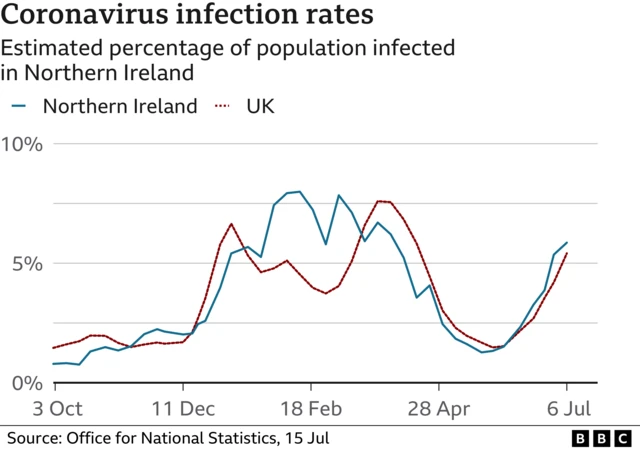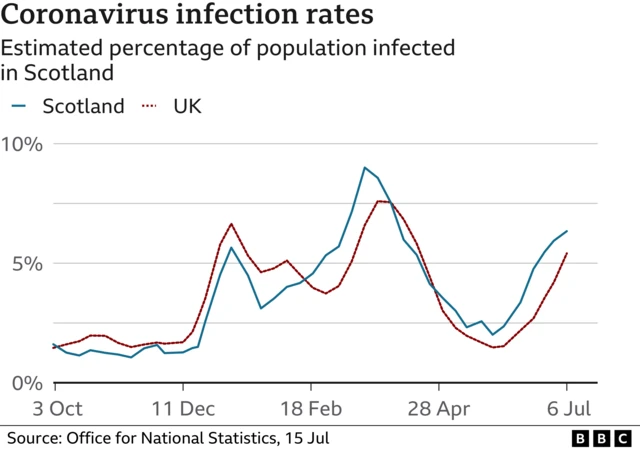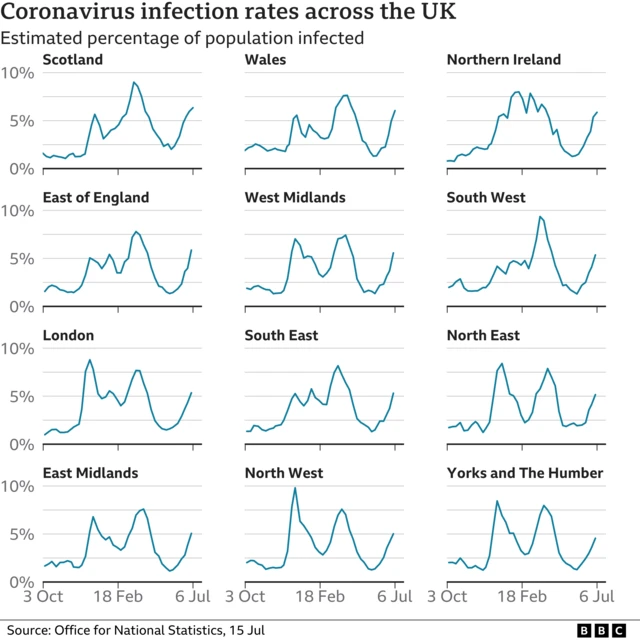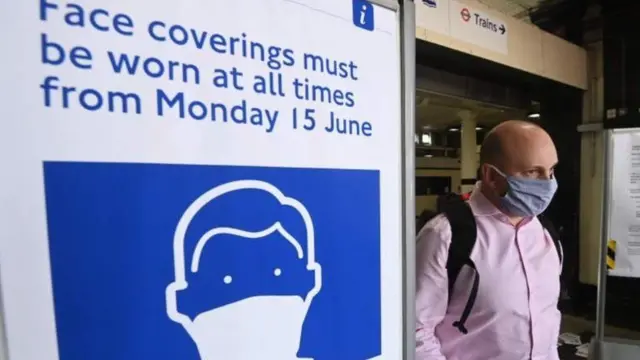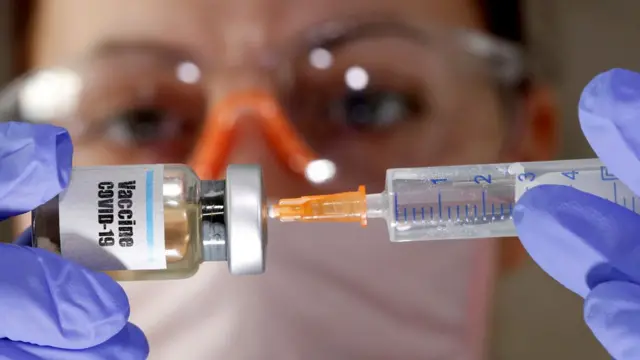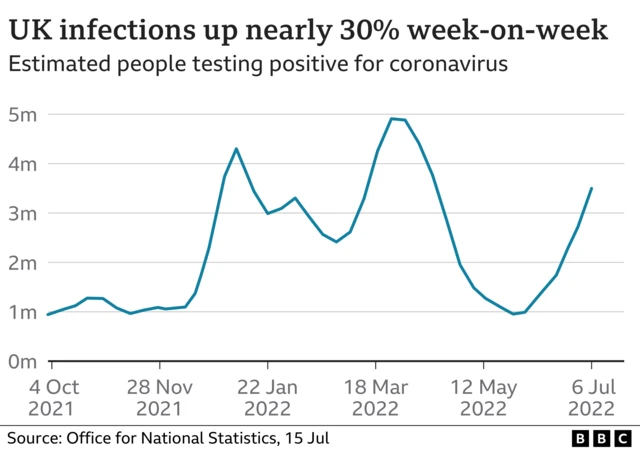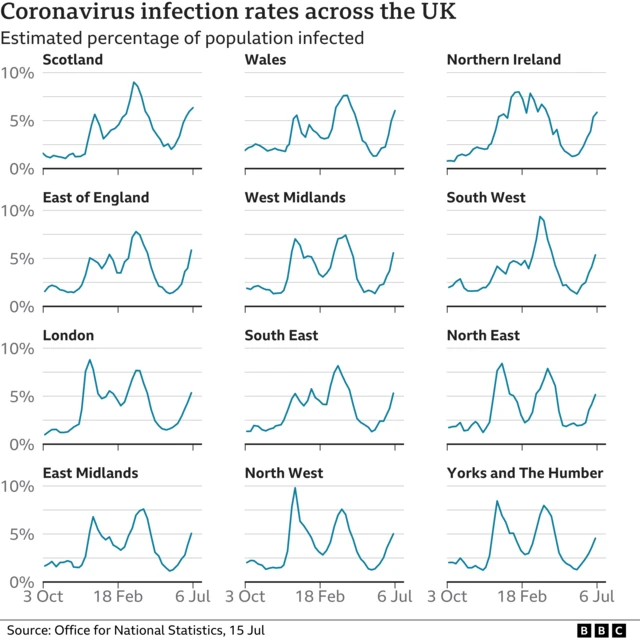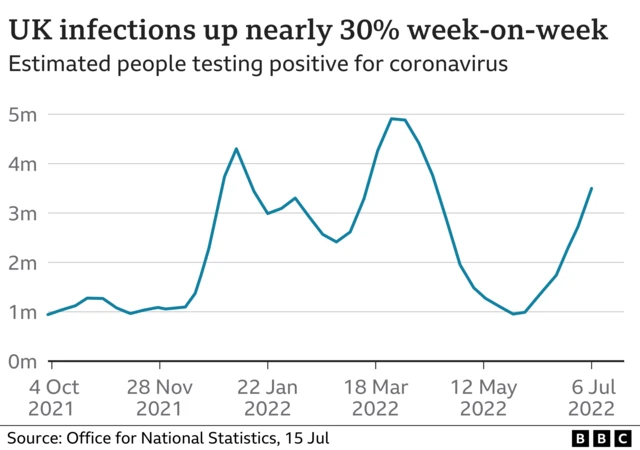Thank you for joining our coveragepublished at 13:48 BST 15 July 2022
 Image source, EPA
Image source, EPAWe're going to close this live page soon but thanks for joining us. Here's a roundup of all the key events from today.
New Covid statistics
- Cases of coronavirus rose 29% across the UK in the week ending 6 July, fresh data shows
- In the latest ONS report, external, rates were: one in 19 in England - up from one in 25 the week before; one in 16 in Scotland - up from one in 17; one in 17 in Northern Ireland - up from one in 19; and one in 17 in Wales - up from one in 20
- The rise is being driven by fast-spreading sub-variants of Omicron, called BA.4 and BA.5
New Omicron subvariant
- Experts are keeping an eye on a new variant of Covid called BA.2.75, nicknamed Centaurus
- It's an Omicron subvariant but it's not yet clear whether it's one to worry about or not
- It was first spotted in India in May. Since then, at least 10 other countries, including the UK, Germany and the US, have seen some cases
- The European Centre for Disease Prevention and Control has listed it as a "variant under monitoring" rather than a "variant of concern"
Unvaccinated Britons told to get a jab
- Nearly three million adults in England still haven’t come forward for a Covid vaccine, according to NHS England, and experts are urging them to rectify this amid rising cases
- Experts say the figure includes people who could get extremely ill if they were to catch the virus
Read more on this story here.
The live page writers were Jack Burgess, Sam Hancock and Thomas Mackinstosh. The editor was Jeremy Gahagan.



